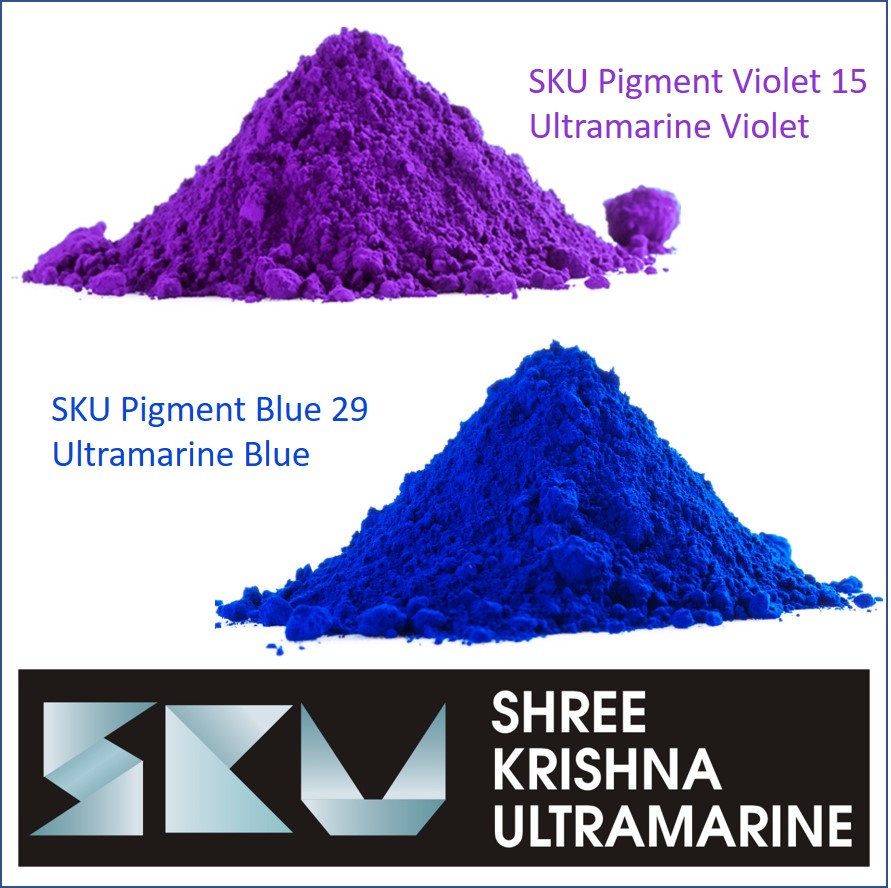Little Known Facts About Pigment Blue.
Why Ultramarine Pigments Remain the World’s Most Trusted Blue

For centuries, color has defined art, design, and industry. Among the most significant hues, Ultramarine stands out for its depth and richness. Today, companies like SKU Pigments produce high-quality Ultramarine pigments, including Ultramarine Blue, Ultramarine Violet, Pigment Blue 29, and Pigment Violet. From industrial coatings and packaging, Ultramarine has become the standard of modern blue pigments.
The History and Significance of Ultramarine
The name Ultramarine comes from the Latin “ultra mare,” meaning “beyond the sea,” a reference to lapis lazuli originally imported from Afghanistan. For centuries, it was a rare treasure, used by Renaissance masters to depict divine subjects. It symbolized wealth and divinity.
Modern chemistry made it possible to synthesize Ultramarine pigments, bringing the once-exclusive shade into mass production. This breakthrough turned a precious rarity into a accessible solution for countless sectors.
Ultramarine Blue Pigments
Ultramarine Blue pigments—the synthetic form of Pigment Blue 29—are the most widely used. Known for their stability, they are perfect for sensitive applications. They are used in:
• Paints and coatings for long-lasting shades.
• Polymers and rubbers, thanks to chemical safety.
• Inks and printing, where sharpness is vital.
• Cosmetics, given their non-toxic nature.
This balance of economy and brilliance keeps Ultramarine Blue among the global color leaders.
The Elegant Appeal of Violet Shades
Ultramarine Violet offers delicate hues that appeal in specialty coatings. Pigment Violet derived from Ultramarine is highly dispersible, making it ideal for eco-friendly materials.
Its muted shade enhances interior design, while ensuring stability without chemical breakdown.
How Pigment Blue 29 Powers Industries
Pigment Blue—particularly Ultramarine Blue pigments—remains a market leader. It offers weather resistance for:
• Car finishes with brilliant Pigment Blue sheen.
• Packaging, ensuring consistent identity.
• Construction materials, adding beauty and durability.
This multi-industry demand ensures Pigment Blue’s future relevance.
Why Industries Prefer Ultramarine
• Non-Toxic & Safe: Suitable for sensitive products.
• Heat & Light Resistant: Stable in outdoor use.
• Eco-Friendly: Green production methods.
• Cost-Effective: Affordable vs. natural pigments.
• Versatile: Applicable everywhere color matters.
Ultramarine in Modern Industries
1. Paints & Coatings: Protective coatings.
2. Plastics & Rubber: Stable in polymers.
3. Cosmetics: Skincare-safe pigments.
4. Construction: Plaster and decorative finishes.
5. Printing & Inks: Precision printing.
Why Choose SKU Pigments?
SKU Pigments leads the market, offering innovation in Ultramarine pigments. Their product portfolio includes:
• synthetic Ultramarine for vibrant, bold applications.
• Ultramarine Violet and Pigment Violet for elegance and subtlety.
• Custom shades for specialized markets.
Their reputation is built on consistent quality and eco-friendly production.
Final Thoughts on Ultramarine Pigments
From a costly luxury to an eco-friendly modern solution, Ultramarine has evolved with industries. Whether it’s the classic brilliance of Ultramarine Blue, the subtle elegance of Ultramarine Violet, or the stability of Pigment Blue 29, Ultramarine pigments remain essential.
With SKU Pigments as a leading manufacturer, industries achieve innovation with color. As demand for sustainable pigments rises, Ultramarine will remain dominant in global markets.
Frequently Asked Questions
1. What is Ultramarine?
A blue/violet pigment with historic roots and modern industrial use.
2. What is Pigment Blue 29?
A widely used industrial pigment.
3. Where is Ultramarine Violet used?
In fine arts and specialty industries.
4. Are Ultramarine pigments safe?
Yes, non-toxic and eco-friendly.
5. Why choose SKU Pigments?
Leaders in Ultramarine innovation.